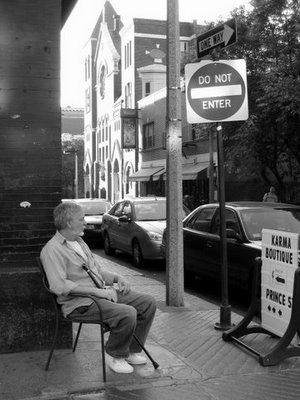Hunger cafes, really?
A colleague from the New York office forwarded Anand Giridharadas' article from Tuesday's New York Times. The text of his email read "food at the price of dignity?".
The article, unfortunately, is a classic example of the lopsided journalism often evident in The New York Times’ coverage of India – journalism that thrives on sensationalizing the issues of poverty and inequality, rather than sensitizing the readership to reality.
What Giridharadas brands “a Mumbai variation" and "hunger cafe", is in fact an organization rooted deeply in Islamic culture, at least Indian Islamic culture. There are shops near mosques (and other places of worship) where people can buy meals for the poor, all over India. The obligation of "those who have" manifests in and across the different religious communities of India and it is a noble act to buy someone a meal after prayers. I would be surprised if even half of the donations at Mahim Darbar (the restaurant that Giridharadas refers to) come from golden Hondas that seem to arbitrarily rain Rs. 100 notes. Most donations in such places come from benefactors who walk there after praying at the neighbourhood mosque.
Giridharadas goes on to criticize Indians' unwillingness to embrace anonymous checkbook-style charity, but fails to acknowledge the underlying cultural reasons. In the developed world, the middle class does not encounter poverty on a daily basis, hence it makes sense to donate anonymously to organizations that create a conduit for the passage of wealth from the haves to the have-nots. As a middle class Indian, poverty stares you in the face all the time – through people you interact with every day. It is but natural then, to donate to a known individual rather than an organization without a face. Paying directly for your driver's operation or your maid's children's education -- a 'feudal vestige', per Giridharadas -- is in fact an ultra-efficient form of charity. You know exactly where your money is going, there are no overheads, and you can directly see and observe the impact of your charity - all desirable qualities, especially when you have little to give to begin with.
Islam, in fact, ordains two kinds of voluntary giving: (1) zaqat –a fixed percentage of the donor’s wealth, which is meant for the general benefit of the community; and (2) sadaqat - where the bequest is made directly and spontaneously from one individual to another and the amount given is at the discretion of the giver. Mahim Darbar is but one of the dozens of similar institutions in Bombay that facilitate sadaqat.
To quote another colleague, "(In the development world...) we often talk about the importance in charity of a feeling of connectivity. It's powerful because it makes giving more tangible. Part of the appeal of microfinance is the loan to the individual - a specific, real person. Kiva's entire model is based on connecting you to this specific individual. Time and time again it has been shown that the emotional connection to real people, lives and circumstances makes you more likely to give - and give more. So what is the problem if Indians want to connect to the people they are giving to?”
As for the question of dignity, begging in any form is demoralizing. It isn't specifically linked to sitting on a sidewalk. As the Lady put it yesterday, in all of her characteristic literary eloquence: the poor, deprived and maimed have for long exhibited their poverty/disease/debilitating deficiencies to solicit sympathy and spare change. By sitting outside the restaurant, these men are (in a somewhat perverse way) “earning” their lunches (by desert, even if not by physical labour) -- perhaps, paradoxically, a more dignified way to eat than eating from invisibly-bestowed handouts whose unseeing givers do not understand the import of what they are doing.
.jpg)
.jpg)
.jpg)
.jpg)
.jpg)

